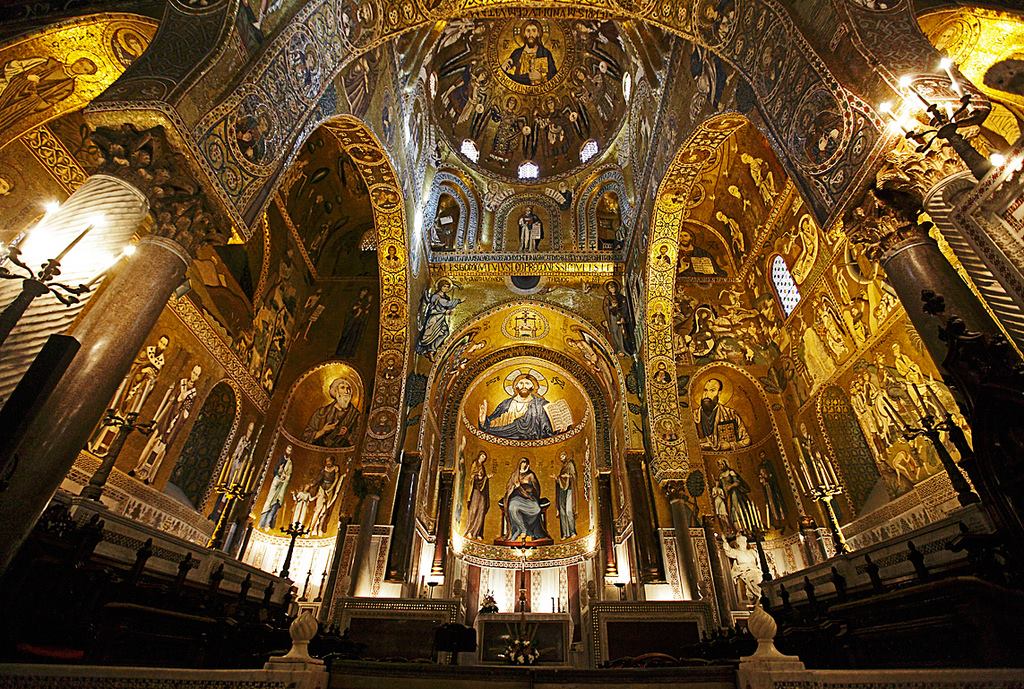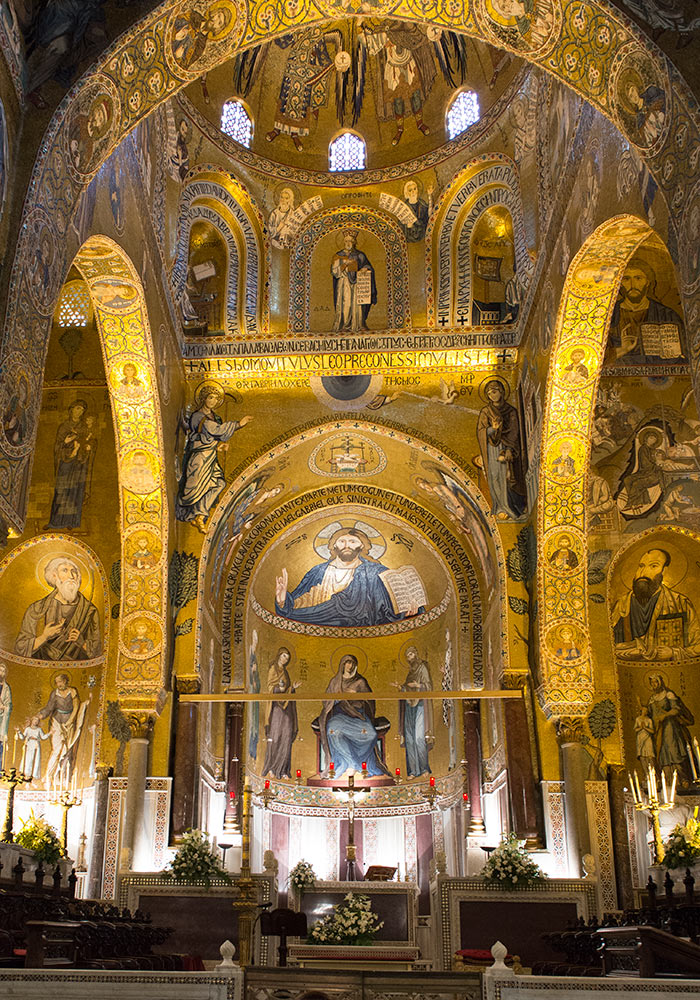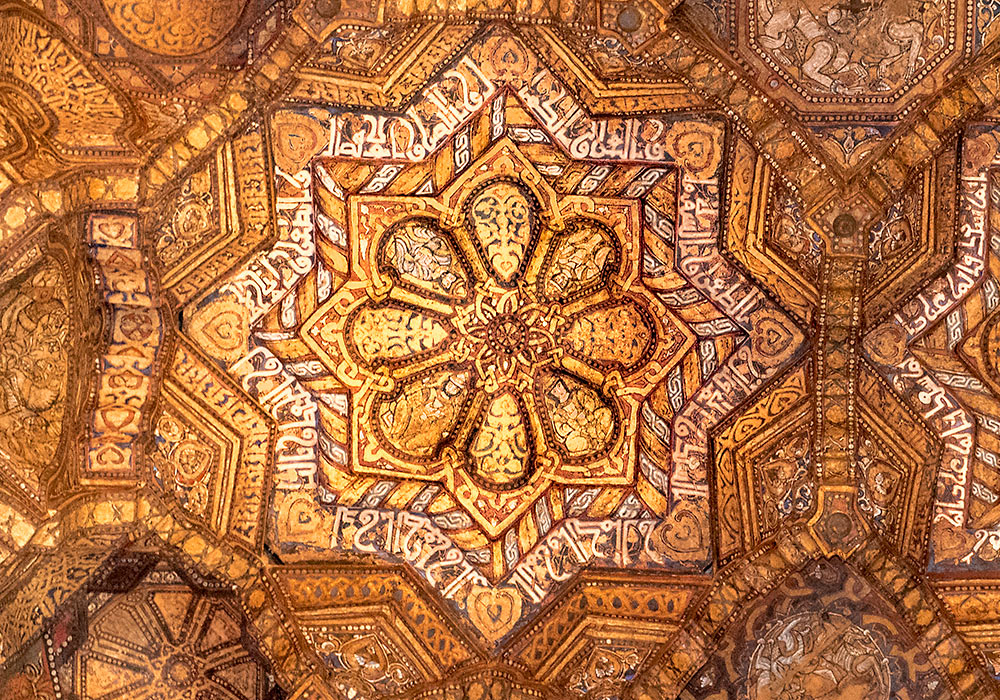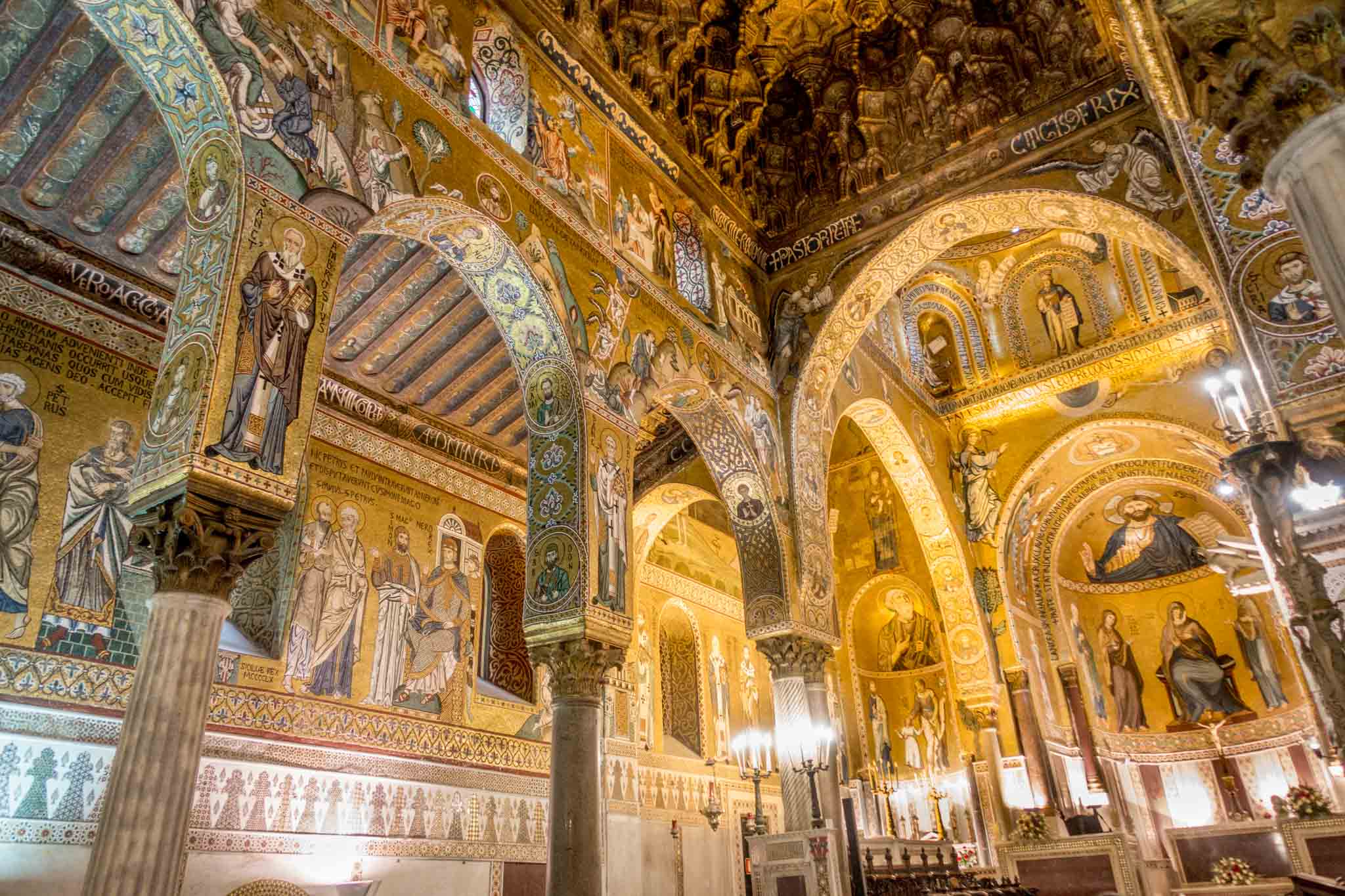
Byzantine mosaics ot The Palatine Chapel in the Norman Palace Stock
The Royal Palace with its stunning Palatine Chapel, or Cappella Palatina in Italian, is situated on the edge of the historic centre of Palermo near to the cathedral. These are part of the Arab-Norman Palermo and the Cathedrals of Cefalu and Monreale UNESCO World Heritage Site. Explore the Palatine Chapel and Royal Palace of Palermo

09. The Palatine Chapel, Palermo, Sicily, Italy Visions Of The Past
The Cappella Palatina, that is the chapel of the Royal Palace, is located inside the Palazzo dei Normanni in Palermo. The Palatine Chapel, built in 1130 at the behest of Ruggero II d'Altavilla, the first Norman king of Sicily, is considered one of the best preserved medieval jewels in the world.
Shutterbug Traveler Cappella Palatina The Palatine Chapel, Sicily
The Palatine Chapel is the royal chapel of the Norman kings of Kingdom of Sicily situated on the second floor at the center of the Norman Palace in Palermo. The chapel is a great symbol of multi-cultural cooperation. Craftsmen of three different religious traditions worked alongside each other.

Palatine Chapel Visit Sicily official page
The Palatine Chapel, begun to be built in 1129 and completed in 1143 by the will of Roger II of Sicily, is a three-nave basilica located within the architectural complex where the entrance to the public is on the west side, right in Independence Square. The church is dedicated to St. Peter the Apostle.

Palatine Chapel, Palermo Book Tickets & Tours
Designed by Roger II in 1130, this extraordinary chapel is Palermo's top tourist attraction. Located on the middle level of Palazzo dei Normanni's three-tiered loggia, its glittering gold mosaics are complemented by inlaid marble floors and a wooden muqarnas ceiling, the latter a masterpiece of Arabic-style honeycomb carving reflecting Norman Sicily's cultural complexity.

Mosaics in Sicily Wonders of Sicily
Its greatest attraction is the Palatine Chapel, where every detail reveals the perfect union among different styles: Latin, Byzantine, Arab — here's where the ancient cultures of the Mediterranean blend to reflect that 'melting pot' that Sicily was in the Middle Ages.

The Palatine Chapel from the Norman Palace Palazzo Dei Normanni in
The Palatine Chapel, on the upper floor of the Palace, is certainly the highlight of a visit: it is a remarkable chapel built in the 12th century by King Roger II and incorporating Byzantine and Norman styles. The entire chapel is highly decorated with golden mosaics, and certainly one of the most beautiful churches in Europe.

Palermo, Palatine Chapel at the Royal Palace of Palermo, Sicily, Italy
The Palatine Chapel ( Italian: Cappella Palatina) is the royal chapel of the Norman Palace in Palermo, Sicily. This building is a mixture of Byzantine, Norman and Fatimid architectural styles, showing the tricultural state of Sicily during the 12th century after Roger I and Robert Guiscard conquered the island.

Palatine Chapel Palermo Sicily Stock Images Download 233 Royalty Free
This palace is the seat of the Sicilian Parliament, one the most important autonomous regional governments in Italy. The construction of the chapel was ordered by Norman King of Sicily Roger II, in 1132, by reusing an old chapel built in 1080 (which, in turn, became a crypt). The chapel was finished between 1140 and 1143.

Cappella Palatina The Palatine Chapel, Palermo Wonders of Sicily
Cappella Palatina: The Palatine Chapel, Palermo - Wonders of Sicily - SICILIA ≡ Cities Acireale Agrigento Agrigento town Valley of Temples - Valle dei Templi Scala dei turchi Phaiax' underground water system Catania Cefalù Cefalù town Cefalù Cathedral La Rocca di Cefalù Aleister Crowley Museo Mandralisca, Cefalù More photos from Cefalù Erice Modica

Where to Go in Sicily on a Fabulous OneWeek Road Trip
The Palatine Chapel inside Palermo's Royal Palace—once the private chapel of the Norman Kingdom of Sicily—is one of the most breathtaking and important attractions in the city. The chapel seems to glow in a golden light, reflected by the ornate mosaics that cover its interior and are considered among the best in Italy. Learn more

The Palatine Chapel is the royal chapel of the Norman kings of Sicily
The Palatine Chapel (Cappella Palatina) in Palermo is a remarkable example of medieval art and architecture, located within the Palazzo dei Normanni (Palace of the Normans) complex. The construction of the Palatine Chapel began in 1132 under the reign of Roger II of Sicily and was later completed by his son, William II.

Palatine Chapel, Palermo Sicily. Much of the work on this Christian
On the southern Italian island of Sicily, a richly decorated church known as the Cappella Palatina presents a puzzling pastiche of art and architecture that feels at once Byzantine , Islamic, and Romanesque. The Cappella Palatina was built by Normans of French descent in the twelfth century. But what can explain its eclectic decoration?

The Palatine Chapel and Royal Palace with stunning Byzantine mosaics
The Palatine Chapel in Palermo is a Byzantine style chapel built by the Normans in the 12th century, and famous for its beautiful mosaic decoration and artwork. Explore the Palatine Chapel in Palermo

Palatine Chapel, Palermo, Sicily Palatine Chapel, Royal Pa… Flickr
The Palatine Chapel is a site that alone makes a visit to Palermo worthwhile. Begun in 1130, the year of Roger II's coronation as the first king of Sicily, it was completed in 13 years and consecrated, as an inscription in the dome attests, in 1143.

The Palatine Chapel, Palermo, Sicily, Italy Visions Of The Past
The UNESCO-listed Norman Palace, Palazzo dei Normanni, is the top historic attraction in Palermo Sicily. It houses the Palatine Chapel, an extraordinary space filled with glittering Byzantine style mosaics. French author Guy de Maupassant once described the chapel as "the finest religious jewel dreamed up by the human mind."